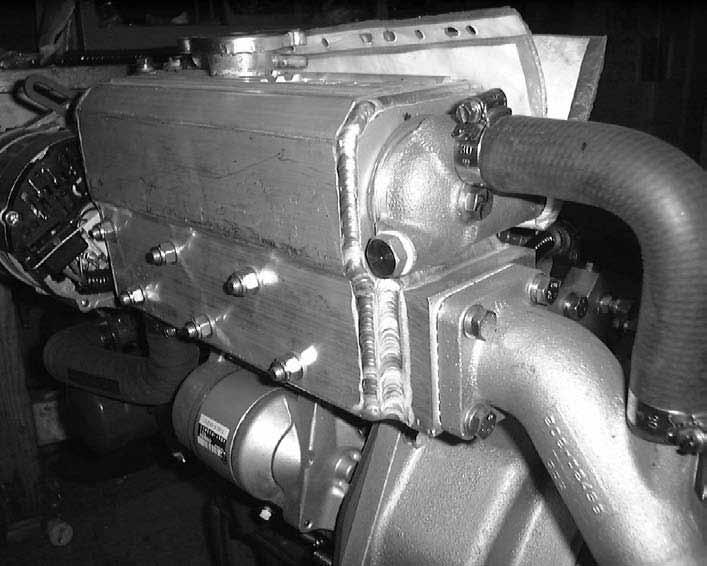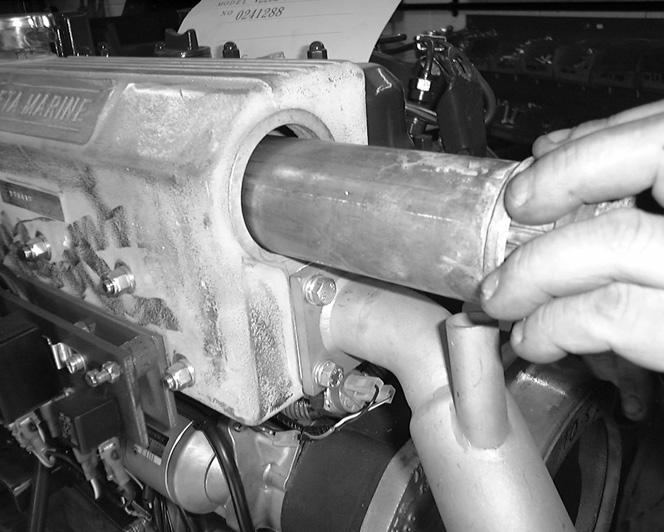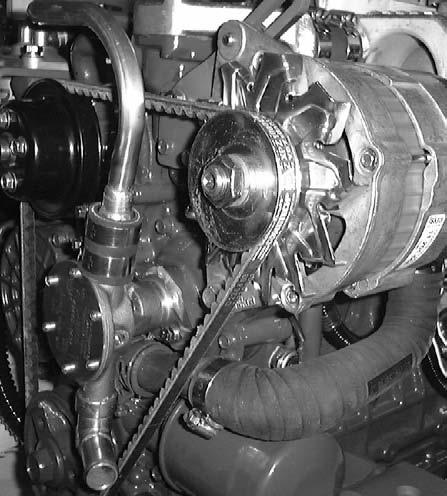
1 minute read
Belt tensioning
(1) The wasting zinc anode should be checked every six months and replaced every year or as necessary. The anode is attached to the bolt inserted in the aft end cap of the heat exchanger. See fig. 2j. (2)Unscrew the bolt and replace the complete unit with a new one. (3) Check for leaks. (4)It is possible for fine sea weed and other debris to get past the inlet filter and into the tube stack.
This should be removed and cleaned. See fig. 2k. (5) Drain off coolant into a bucket. (6)Unscrew the 2 end cap retaining bolts (one each end of the tube stack). Remove the ‘O’ rings and
pull out tube stack. Clean tube stack and end caps. (7)Re-assemble using new ‘O’ rings.
Do not overtighten end cap bolts and make sure the tube stack is
the right way round.
(8) Re-fill engine with water/antifreeze solution and run engine up to temperature to check for leaks.
Zinc Anode
Fig. 2j Fig. 2k

BELT TENSION
65 AMP ALTERNATOR (HEAT EXCHANGER COOLED)
WARNING
Belt tension must only be checked with the engine switched off. (1)On heat exchanger cooled engines a single 65 amp is fitted as standard. These alternators are adjusted as follows. (2) The belt tension is adjusted by swinging the alternator outboard as it pivots on its power support bolt. (3)With the engine stopped, loosen the support bolts and the link adjusting bolt. (4)Push alternator outboard to tension and tighten link bolt.
Check that the depression of the belt at position shown is approximately 1/2” or 12 mm when pushed down firmly by thumb. Tighten support bolts. (5)Belt tension should be regularly checked especially during the first 20 hours of running in a new belt, as stretching occurs.Belt tension must only be checked with the engine switched off.
100 AMP ALTERNATOR (OPTION)
The same method, as outlined above applies, but final tensioning must be by hand only. Over tensioning will cause premature failure of components.
Link adjust bolt

Support bolts




